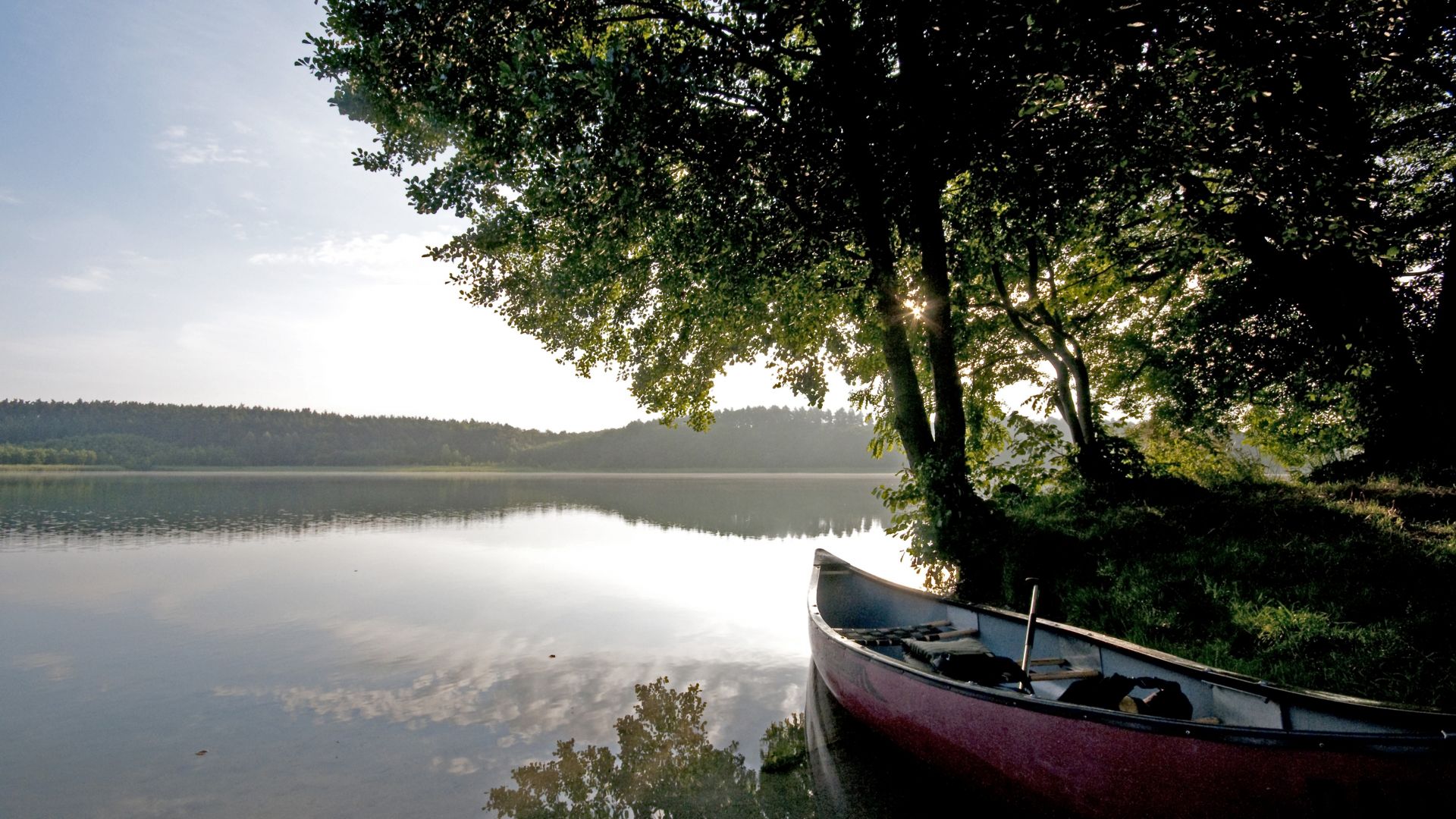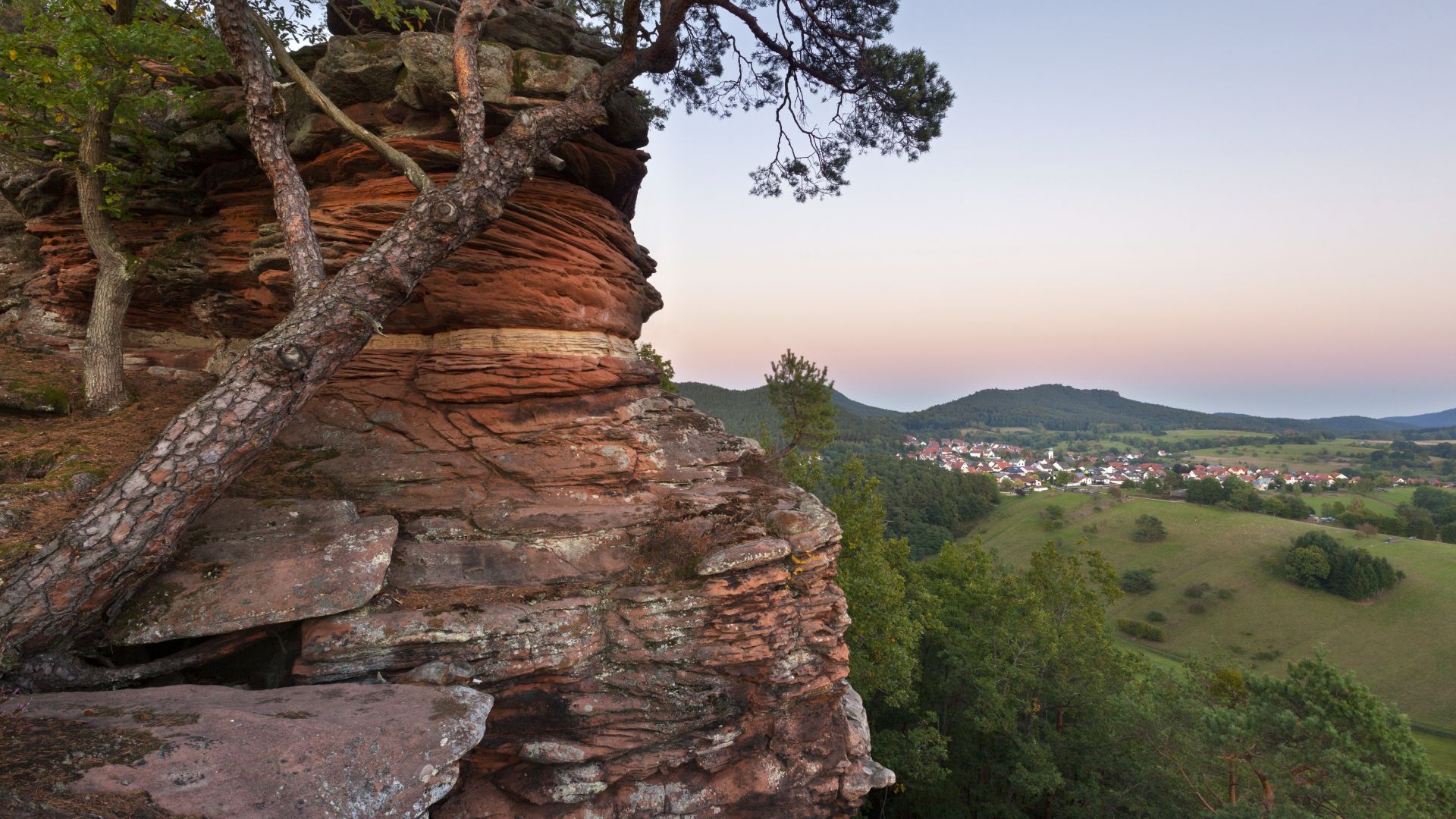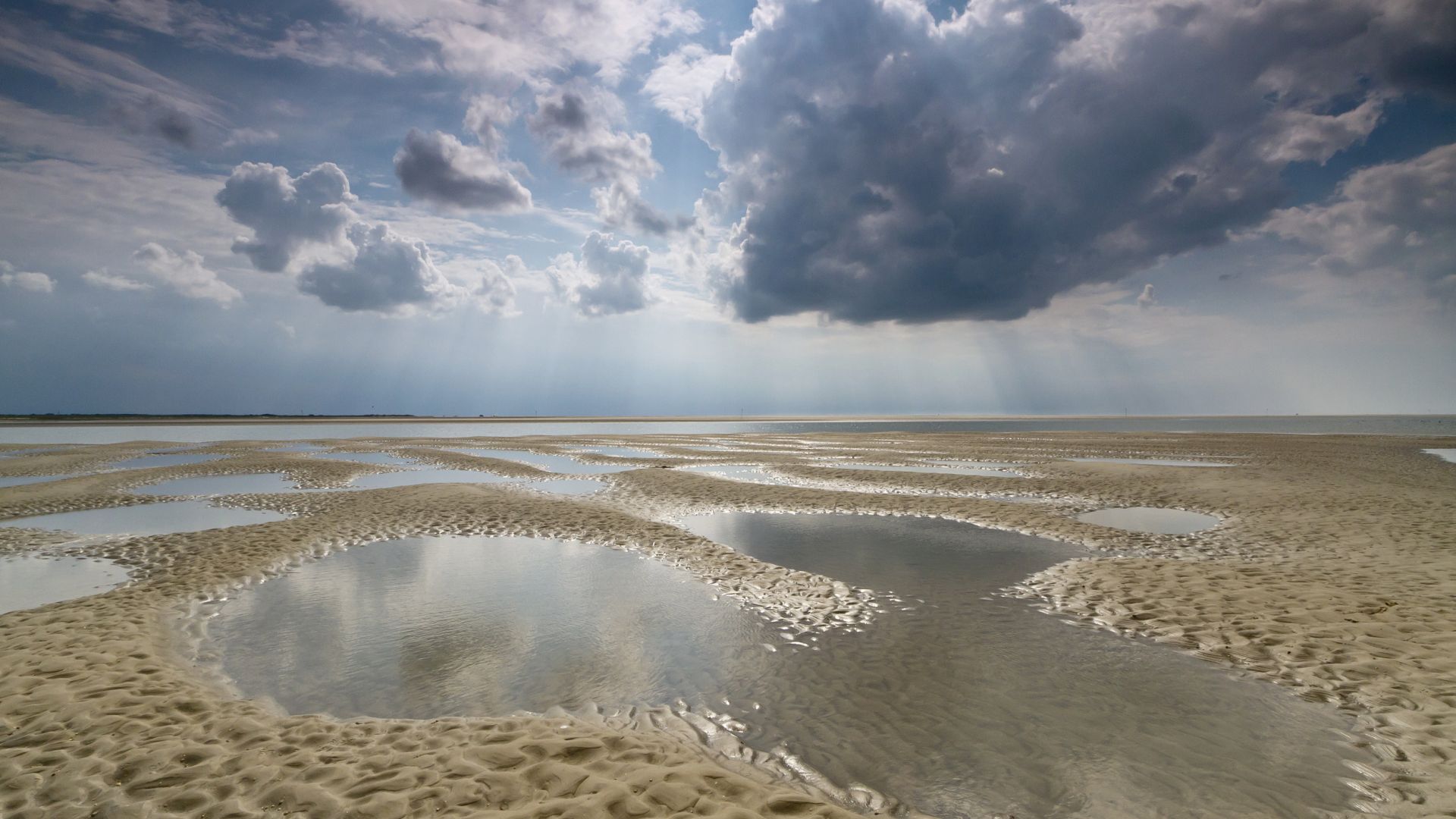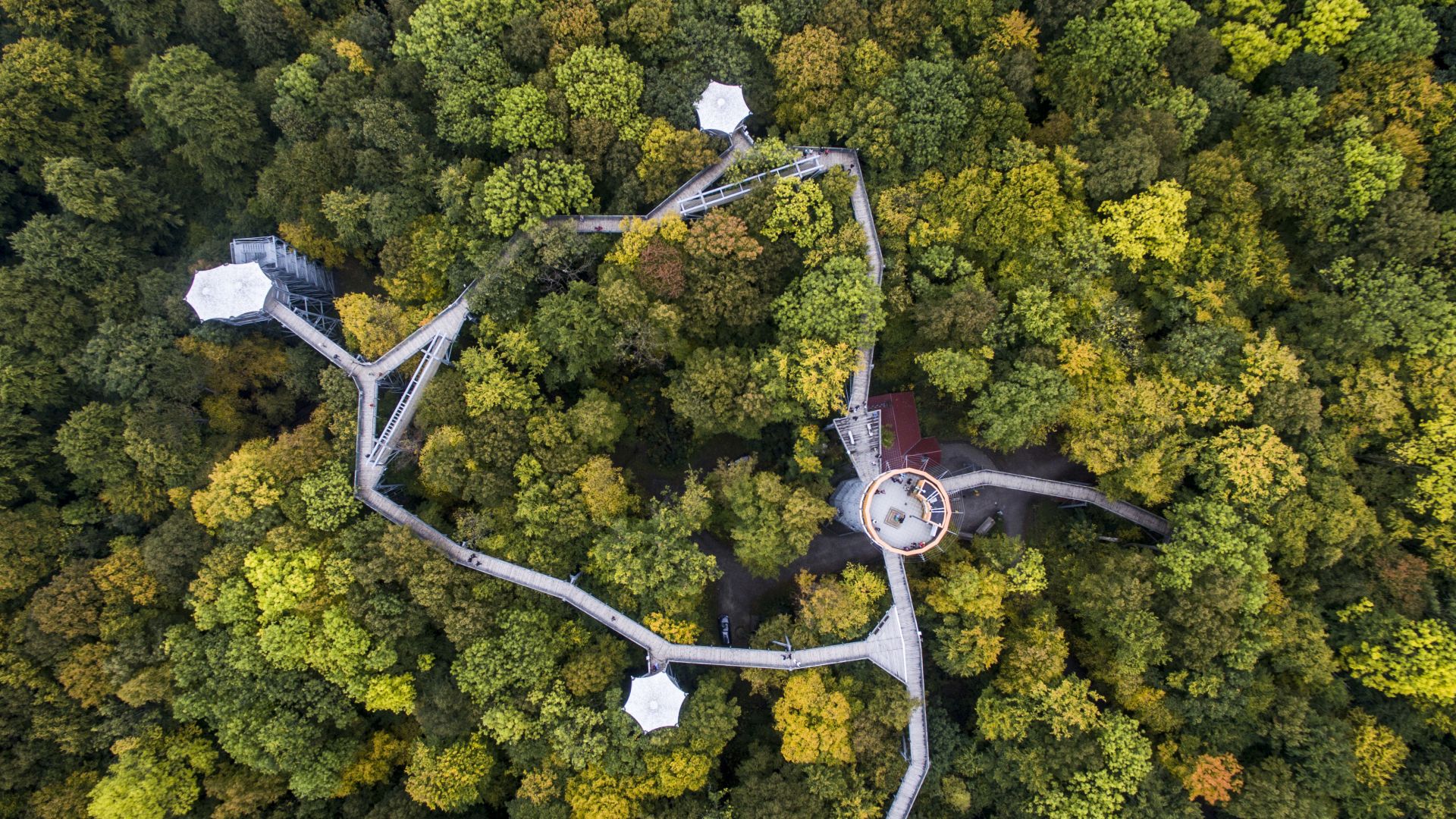Nature & Outdoor Activities
The latest trend: travelling out into the countryside by train.
Germany is a paradise for nature lovers. Public transport is a convenient and sustainable way to discover the forest, meadows, mountains and lakes. Time for four insider tips.
Dense forests, tranquil lakes, bizarre rocky landscapes, snow-covered mountain giants: Destination Germany is a treasure trove of natural beauty. Many of the unique natural and cultural landscapes are melting pots of biodiversity. For example, toads hop through wet meadows and lynxes prowl through beech forests. Otters meander through river courses and storks nest on the chimneys of half-timbered houses. The diversity is so immense and the wonders of nature are so astonishing that far more than 100 national parks, biosphere reserves, nature parks and wilderness areas have been designated between the coast and the Alps.
We must protect what we love: according to this principle, a total of 23 nature regions have been chosen for "Destination Nature" since 2001. Thanks to the cooperation of three large environmental associations and Deutsche Bahn, it is possible to reach these natural wonders between the Alps and the Wadden Sea by public transport, and to get around easily without a car. Environmentally friendly travel benefits sensitive natural areas. Most importantly, CO2 emissions are reduced, a plus for climate protection and biodiversity.
Uckermark Nature Park (Brandenburg): Land of Lakes
 Uckermark: Lakes Nature Park
©TMB-Fotoarchiv (Hendrik Silbermann)
Uckermark: Lakes Nature Park
©TMB-Fotoarchiv (Hendrik Silbermann)
The lakes lie calm, the streams whisper eternally: anyone who wanders through the Uckermark Lakes Nature Park could imagine themselves somewhere out in the wilderness. Yet this quiet, beautiful landscape is only a short distance away, not far from Berlin in the north-east of Brandenburg. More than 300 lakes, moors, rivers and countless streams invite you to enjoy all kinds of water activities such as canoeing, swimming or cycling along the shores. Wildlife also loves the Uckermark. Ospreys circle in the sky, cranes stalk through reed-fringed pools and industrious beavers build their castles on the banks. In addition, idyllic country villages and small towns with traditional cobblestones attract visitors. The village of Lychen offers a special feature in the form of the seven lakes of the Lychen Lake Cross. People have been building rafts from logs here since the 18th century - in the past for transport, nowadays for tourist entertainment.
Take the train: From all over Germany, you can travel comfortably to Berlin with ICE or IC connections. A regional train will then take you all the way to the Templin, Fürstenberg, Zehdenick or Prenzlau Nature Parks. Take a round trip around the region on the UckermarkShuttle bus line.
Palatinate Forest Biosphere Reserve (Rhineland-Palatinate): Forests and Wines
 Palatinate Forest Nature Park
©Lookphotos (Heinz Wohner)
Palatinate Forest Nature Park
©Lookphotos (Heinz Wohner)
Where Germany's endless forests meet vine-covered vineyards, there you will find the Palatinate Forest. The dense tree population with its sweet chestnuts, copper beeches and sessile oaks is so unspoilt that wildcats and lynxes, peregrine falcons, eagle owls and screech owls feel at home there. As you wander through the thicket, jump over streams or climb up bizarre rocks to look over the hills and valleys from above, it's almost possible to imagine meeting Hansel and Gretel from Grimm's fairy tale. This nature and hiking paradise also attracts visitors to the southwest of Germany with its romantic castles and idyllic villages. Thanks to the mild climate, kiwis, lemons, figs and almonds also ripen in the wine villages. Germany as a travel destination reveals its sunniest and most enjoyable side in the Palatinate Forest.
Here's how to get there by train: long-distance trains take you to Mannheim, Neustadt an der Weinstraße, Kaiserslautern or Karlsruhe, for example. From there, the Rheinland-Pfalz-Takt provides access to the Palatinate Forest. Those staying overnight can use local buses and regional trains free of charge with the PfalzCard.
Wadden Sea National Park (North Sea): Wave Patterns in the Sand
 National park Schleswig-Holsteinisch wadden sea: Tümlauer Bucht; natural highlight 2016
©Landesbetrieb für Küstenschutz, Nationalpark u. Meeresschutz S-H (Martin Stock)
National park Schleswig-Holsteinisch wadden sea: Tümlauer Bucht; natural highlight 2016
©Landesbetrieb für Küstenschutz, Nationalpark u. Meeresschutz S-H (Martin Stock)
Such a vast sea - with mudflats, dunes, beaches, salt marshes, islands and the Halligen: the Wadden Sea on the German North Sea coast has been formed over thousands of years through the rhythm of the tides. It is the largest of its kind in the world, one of the most fertile natural landscapes anywhere, and is under special protection as a UNESCO World Heritage Site. Millions of birds rest here on their flight to their summer and winter habitats, seagulls swoop shrieking loudly over the salt marshes, snails and mussels show themselves in the silt, as the water gurgles away leaving a perfect ripple pattern in the sand. People are magically drawn to this unique world heritage of nature - for mudflat hiking, horseback riding, fishing or relaxing on one of the tiny islands or the Halligen.
Hainich National Park (Thuringia): Wondrous Wilderness
 Schönstedt: Treetop path in the national park hainich,, Thüringer Tourismus GmbH
©TTG
Schönstedt: Treetop path in the national park hainich,, Thüringer Tourismus GmbH
©TTG
There is the fragrance of foliage and mushrooms. A whinchat bird chirps from the heights, and a toad splashes into a small pond, which is surrounded by shining yellow irises. The Hainich National Park takes you back to times long past, when the forests were simply left to their own devices. A primeval forest in the middle of Germany, where delicate orchids push their blossoms out of the damp earth and wildcats lie in wait in the branches of the old beech trees. Those who want to explore these dense forests from dizzying heights can take the Treetop Trail. The Trail across the tops of this wilderness is 540 meters long. The fascinating Hainich National Park with its rare forest inhabitants is located only about ten kilometers from the UNESCO World Heritage Site Wartburg and is a must for all lovers of protected nature.
This is how to travel there by train: regular ICE and IC connections from all over Germany will bring you to Eisenach. Good starting points include the train stations of Bad Langensalza and Mühlhausen. The "Umweltticket" or the "Welterbeticket" will bring you to the most interesting locations by bus.
This is how to get to the Wadden Sea in Lower Saxony by train: Using IC connections, you can reach Norddeich Mole from many cities in Germany. From there you can take a ferry to Norderney and Juist. From the train stations Wilhelmshaven, Cuxhaven, Esens and Norden, buses run to the ferry terminals serving Baltrum, Wangerooge, Langeoog and Spiekeroog. The entire East Frisian peninsula can be traveled inexpensively on tour buses.